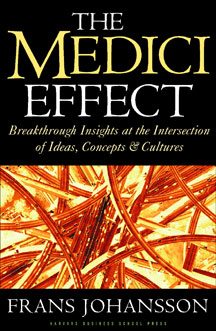 When you step into the intersection of fields, disciplines, and cultures, existing concepts can be combined into a large number of extraordinary new ideas. The name given this phenomenon by author Frans Johansson is the Medici Effect and is based on a remarkable burst of creativity in fifteenth-century Italy.
When you step into the intersection of fields, disciplines, and cultures, existing concepts can be combined into a large number of extraordinary new ideas. The name given this phenomenon by author Frans Johansson is the Medici Effect and is based on a remarkable burst of creativity in fifteenth-century Italy.
The Medicis were a banking family in Florence that funded creators from a wide range of disciplines. Thanks to this family and a few others like it, sculptors, scientists, poets, philosophers, financiers, painters, and architects converged upon the city of Florence. There they found each other, learned from one another, and broke down barriers between disciplines. Together they forged a new world based on new ideas—what became known as the Renaissance. As a result, the city became the epicenter of a creative explosion, one of the most innovative eras in history. The effects of the Medici family can be felt even to this day.
Diversity is a key component of innovation. The adoption of technology is largely a social phenominon. Creating a culture that has enough variety to absorb new ideas is as important as the ideas themselves. A key component of the revolution is this diversity as demonstrated in the 15th century in Florence Italy.













